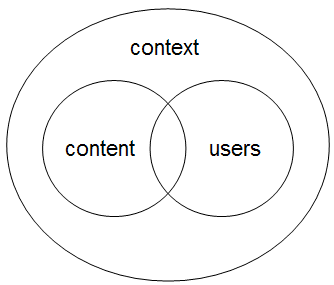Tuesday, March 31, 2009
Blog Change
8 Areas of Inquiry
To realise our project "Cenotaph" in the CryEngine. Our team must rigorously evaluate particular components and to tests if they are viable for future progress of the project.
Such inquiries as:
- Can Crysis materials be punctured or hollowed to allow for the designs main feature holes in the roof be successful in illustrating a daytime skyline.
- Constructing large scale designs in Crysis. The main feature of the building is a 147m diameter sphere.
- Can we export from ArchiCAD to CryEngine.
- Can we export from Microstation to CryEngine
- Can we export from 3dsMax to CryEngine
- Can we export from SketchUp to CryEngine
- Can we export from Revit to CryEngine
- Is it possible for lights to penetrate through materials to give that effect of stars in the roof?
Presenting Individual Unbuilt Architectures
After each case was summed up, we has settled on 2 projects. Étienne-Louis Boullée's memorial to Issac Newton the "Cenotaph" and Vladimir Tatlin's Tatlin's Tower.

Fig1.) Tatlin's Tower

Fig 2.) Memorial to Issac Newton the "Cenotaph"
After a consultation with tutors Jeremy and Graham, they gave us encouragement to pursue developing the memorial to Issac Newton. We discussed with them the possibilities of building such a large structure in crysis and the elements of shadow, lighting and enclosure. The benefits and key concepts of the Cenotaph were strong and the opportunity to build such an interesting design would incaptulate the investigation into virtual construction. We finally decided it was the right choice and that with Crysis we could take advantage its high power modelling capabilities, to construct an impressive structure as well as an environment.
Collaboration Topics - Records & Context
- paper, microfilm or electronic
- documents or files, maps, plans, drawings, photographs etc.
- data from business systems, word processed documents, spreadsheets, electronic mail messages, digital images
- audio or video
- handwritten documents
- loosely structured records such as correspondence or highly structured records such as forms" (Kennedy & Schauder 1998, p.5,6).
"Records can be categorised in a number of different ways. Commonly recognised categories include:
- Administrative records - procedures documentation, forms and correspondence. Eg. staff manuals, rosters, logging of property maintenance jobs etc.
- Accounting records - reports, forms and related customer billing records
- Project records - correspondence, notes, project development documentation
- Case files - client records, personnel records, insurance, contacts etc" (Kennedy & Schauder 1998, p.6).
CONTEXT
"Context is any information that can be used to characterize the situation of an entity. An entity is a person, place, or object that is considered relevant to the interaction between a user and an application, including the user and applications themselves" (Dey 2001 p.3).
"Context is the environment or situation" (Dey 2001 p.3).
"Adam Schilit claims that the important aspects of context are: where you are, who you are with, and what resources are nearby" (Dey 2001 p.3).
"J. Pascoe defines context to be the subset of physical and conceptual states of interest to a particular entity" (Dey 2001 p.3).
"Context is all about the whole situation relevant to an application and its set of users. We cannot enumerate which aspects of all situations are important, as this will change from situation to situation" (Dey 2001 p.3).
"If a piece of information can be used to characterize the situation of a participant in an interaction, then that information is context" (Dey 2001 p.4).
Reference
Dey, A.K 2001, 'Understand and Using Context', Personal and Ubiquitous Computing, vol. 5, no. 1, February, pp.4-7.
Week 1
12th March - Digital Collaboratoin Studio class number one, consisted of allocating teams and introducing the assignment.
Our first meeting as group meant we had to decide on a collaborative team name.
We came up with team URBANS!
The team members are:
- Myself
- Gordan Davies
- Joanne Vella
- Rebecca Pui Pui Yeung
In Depth Basic Tutorial
Worked through all the Crysis tutorials from the Incrysis website.
http://incrysis.com/forums/viewtopic.php?id=11847&p=1

1.) The 7th Proposal by John Joseph



The 7th Proposal, an innovative, unsolicited design for the World Trade Center Complex, is being offered as an alternative to the proposals recently submitted in New York City. John Joseph Teressi, a visionary architectural designer residing in Los Angeles, believes the entire World Trade Center site should be a memorial and “an affirmation of the human spirit’s ability to rise, through tragedy, to a higher level. At the same time, of course, the site must be economically feasible and provide for office space and residential and commercial activities.”
The 7th Proposal’s World Trade Center site consists of: Victory Plaza with three towers on a 7-story commercial and residential triangular base; Freedom Plaza, an office, commercial and hotel complex; Rally Center -Children’s Exposition and Creativity Center; the Memorial Museum and Chapel of Wings, plus a design for the Marriott Hotel. The footprints of the Twin Towers are lakes, connected by a Memorial Bridge, which contains an atrium and botanical gardens. Hovering ten feet above the lakes are stained-glass rings that send rainbows of light over the cascading water. Parkland includes a great variety of flowers and trees with an amphitheatre, and a Maze of Memories with a large globe fountain, surrounded by a bronze Ring of Names.
The 7th Proposal was conceived when Teressi read about the public rejection of the six original proposals. He began to envision a site which would simultaneously honor those lost and provide an inspiration for future generations. “Buildings sculpt space in very specific ways, and people resonate to that fact much more than we realize.
2.) Underwater Archaeological Museum by Jacques Rougerie


French architect Jacques Rougerie's underwater archealogical museum of alexandria in Egypt.
The concepts of underwater and surface inside water can be accentuated beautifully using crysis. The modelling engine allows for visually appealing realistic water. Something unusual and unseen in reality and our modern day architecture.















